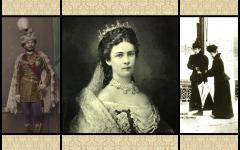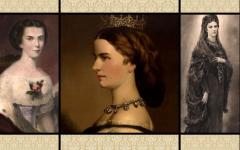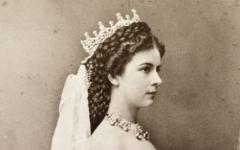ELISABETH AND COUNT GYULA ANDRÁSSY - LOVE OR FRIENDSHIP?
Many Sisi-fans regard it as a fact that Empress Elisabeth of Austria and the rebellious revolutionist Count Gyula Andrássy, the so called "handsome hooked", were fallen in love with each other. Some go even further and believe that Sisi’s fourth child, Marie Valerie, who was born in Hungary, was not the Emperor’s but Andrássy’s daughter! Why the rumors are not true? The following article will answer the question.
Count Gyula Andrássy was one of the commanders of the Hungarian Revolution and War of Independence of 1848-49. After the Hungarians were defeated, Andrássy emigrated to London and then to Paris. On 21 September 1851, he was hanged in effigy by the Austrian government for taking part in the revolution. Since he was financed by his Hungarian relatives, he had absolutely no problems with money during the exile. Furthermore, he was warmly welcome by the high society of Paris. The charming Andrássy was called the "handsome hooked " (le beau pendu) in Paris, and was very popular among the noble women, which he took the advantage of, and often was involved in love affairs. During the exile, he married Countess Katinka Kendeffy. (Read more: Count Gyula Andrássy)
Love or friendship?
Empress Elisabeth of Austria was NOT fallen in love with Count Gyula Andrássy, the so called "handsome hooked". Many Sisi-lovers tend to misunderstand one of the scenes of the third sequel of the film Sissi (Fateful Years of an Empress starring by Romy Schneider). However, even on the silver screen Andrássy is refused by the Empress. One can recall the scene when Sissi feels herself unwell and goes to the balcony. Andrássy follows her then knees in front of Sissi and confesses his feelings towards her. He wants to kiss her hand, however, Elisabeth refuses it. That is, Andrassy received a rejection on the screen so the film does not suggest believing that their relationship must have been love.
Sissi - The Fateful Years of an Empress (1957) © Seven Stars Digital
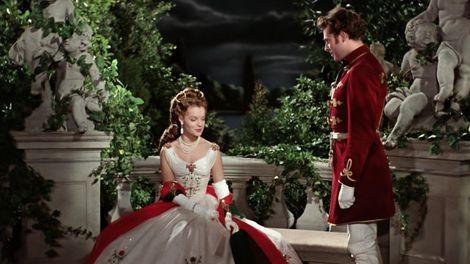
There were several rumors that time in the Viennese Hofburg around the Empress and the “handsome hooked”. However, it must be noted that Elisabeth had been pilloried since the very first days of her arrival at the court. The noble ladies of the Viennese court liked to ridicule the young Sisi and gossip about her (for instance, about her wardrobe, appearance or any of her little violations against the strict Spanish etiquette), and they regarded themselves more noble and educated than the Bayern Duchess.
Elisabeth and Andrássy met in Vienna for the first time in January 1866, when the Count was a member of the Hungarian parliamentary delegation that invited the Empress to Hungary. Count Corti’s biography about Elisabeth, which was first published in 1935, suggests that all the members of the delegate looked wonderfully in their Hungarian clothes. However, Sisi caught sight of the tall and handsome Count Andrássy, who was fascinated by his Empress. Elisabeth was wearing a charming and richly decorated Hungarian dress with a white silk lace apron. Her head was covered by a traditional Hungarian lace bonnet, on which a diamond crown was sparkling. Her pretty lovely face was rosy from the excitement about the delegation of a country she was attracted by. She replied to the invitation in Hungarian, which amazed every delegate even if she still had a strong accent.
At the end of January, the Empress travelled to Hungary, where she spent more than five weeks. During her visit, she had several opportunities to meet the handsome count, however, they were never in private. Elisabeth said the following to the count: "I will tell you this confidentially therefore I will say you something I would not tell everybody. If the Emperor’s things go badly in Italy, it hurts me. However, if they go badly in Hungary, it kills me.” The sentences above are also told by Romy Schneider on the silver screen.
Sissi – The Young Empress (1956) © Seven Stars Digital

After Elisabeth had returned to Vienna, Andrássy started a political correspondence with her. The letters were addressed to the Hungarian Ida Ferenczy, the Empress’ major confident, and they were definitely not love ones. Andrássy’s first letter arrived in a double envelope, and written under a woman’s pseudonym.
After his previous office was over, on 14 November 1871, Andrássy was appointed to the Foreign Minister of Austria-Hungary (in office: 14 November 1871 – 8 October 1879). That day Andrássy sent a letter to his Queen in order to express his gratitude towards her.
The Empress and Andrássy could not spend any time in private because of the strict court etiquette. There is circumstantial evidence of it: In 1872, Elisabeth travelled from the Royal Palace of Gödöllő to the (Gödöllő) station in Andrássy’s carriage with the man. It was only a few minutes journey, however, Sisi kept that in her memory as an exciting secret, so it must have been the only time when they were together in private.
Another proof can be the fact that it is very documented where and when exactly the Empress was during each of her days. According to it, there were only two times when Andrássy and Elisabeth were in private: one was the above mentioned carriage ride, when behind and in front of Andrássy’s carriage there were other carriages; and the another occasion was a few minutes farewell.
If one is not fully convinced that nothing could happen between the two, it is highly recommended to read Elisabeth’s poems, which were completely honest. Her poetry reveals that she regarded any sexual intercourse humiliating. She gave a birth to four children. There had hardly ever been much more occasions she had any kind of sexual relationship with her husband or anybody else.
Sissi – The Young Empress (1956) © Seven Stars Digital
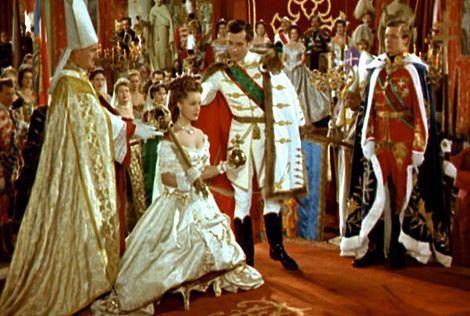
As it follows from the above, Elisabeth was definitely not fallen in love with Andrássy, and regarded him as a friend. She reveals in her honest diary “love never poisoned my relationship with Andrássy”. There must have been only two men Elisabeth was fallen in love with during her entire lifetime. Although her marriage to Franz Joseph was said to be a love match, this question is not as easy as it may seem. You can have some further reading in connection with it (click here). The article also reveals Sisi’s attitude towards sexuality.
Except the Emperor, she was said to have only one boy who she really loved: a boy, who drowned shortly before her meeting the Emperor. Even during her honeymoon in Laxemburg Palace, Sisi was writing a love poem to this boy. And what about the “handsome hooked” who had several love affairs? He might have been fallen in love with the Queen, but it is also possible that he was more a politician than a man in love...
Further readings: THE GIFT OF THE RECONCILIATION - 150th Anniversary of the Austro-Hungarian Compromise of 1867
IN HUNGARIAN: BARÁTSÁG VAGY SZERELEM? Erzsébet királyné és Andrássy Gyula
Visit Empress Elisabeth on Facebook.
Count Gyula Andrássy by Gyula Benczúr (1884), Empress and Queen Elisabeth by Bertalan Karlovszky
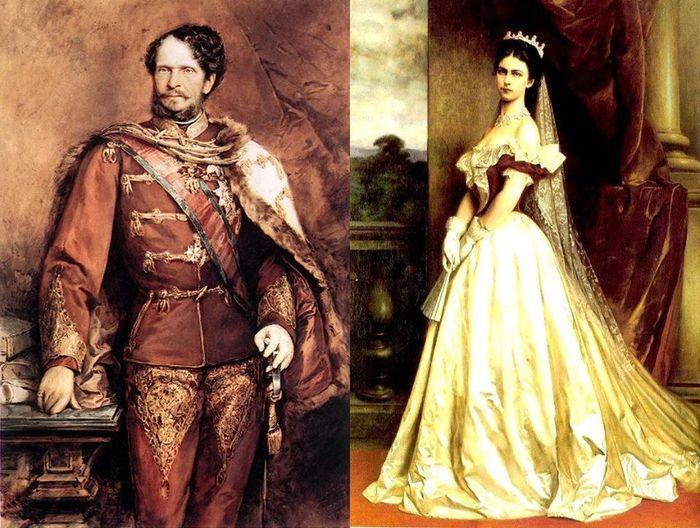
INDEX:Gróf Corti Egon: Erzsébet. Révai Kadás, Budapest, 1935Tolnayné Kiss Mária "Kedves Idám!"Néhány idézet Szécsi Noémi Halcsontos Fűző c. blogjáról származik. A témában írt cikke ITT olvasható.
The Buda Hills Summer Villa of Sisi and her Children during Cholera (SUBTITLED)

